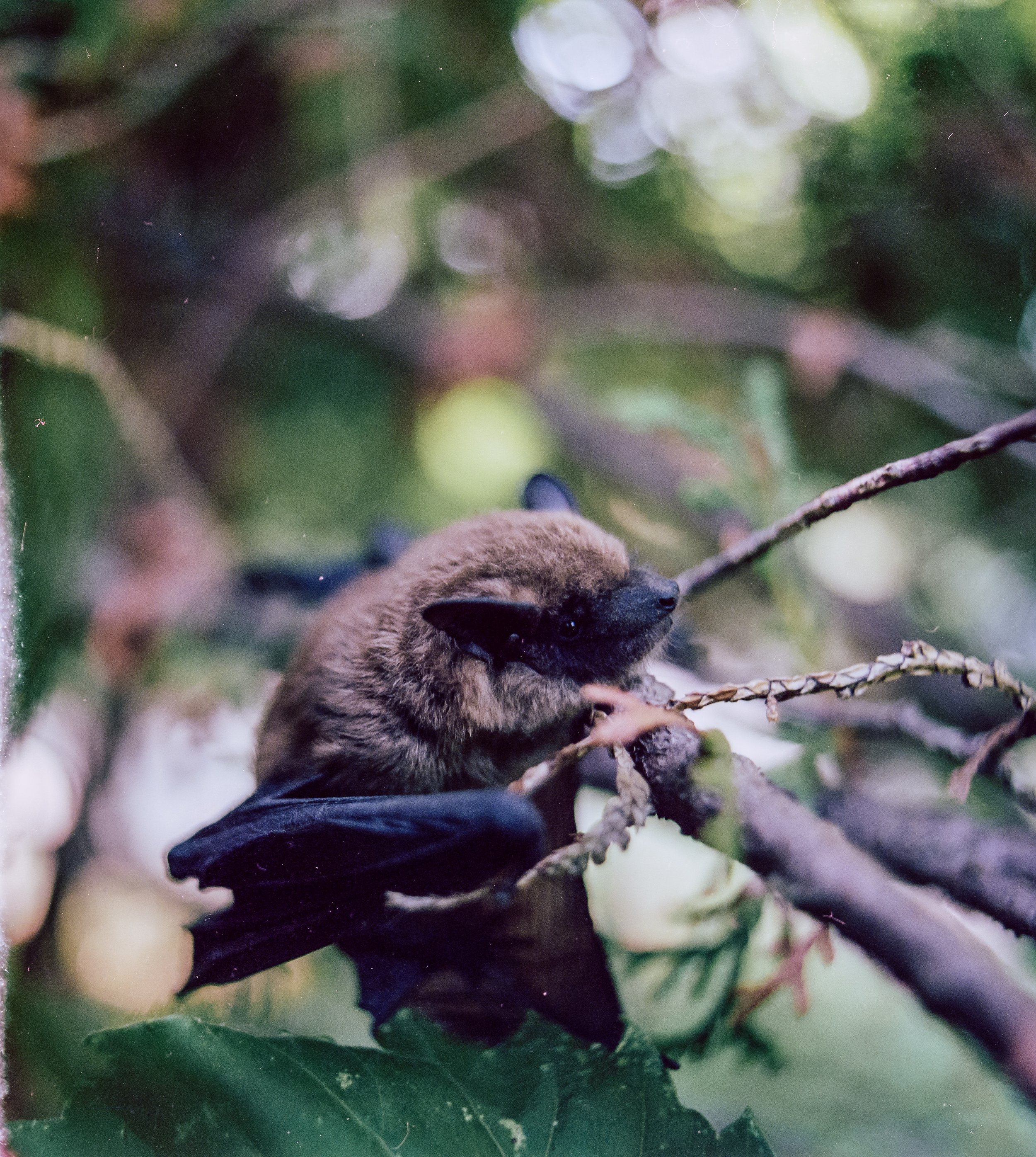
Bioacoustics
Where Science Meets Sound
Welcome to the heart of what we do.
Through the field of bioacoustics, we delve into the rich and mysterious world of bats, deciphering their language of echolocation to understand their behavior, and ecology, and ultimately, safeguard their future.
What is Bioacoustics?
Bioacoustics is the science of analyzing biological sounds within the environment. For bats, sound is not just a means of communication; it's their navigational compass, hunting tool, and social bond. By harnessing cutting-edge technology, we listen in on their ultrasonic calls, revealing a rich tapestry of information that guides our conservation efforts.
Acoustic Monitoring
Central to our work is acoustic monitoring, a non-invasive technique that allows us to eavesdrop on bat activity in real time. Using specialized detectors, we capture the patterns of their calls, painting a vivid picture of their presence, distribution, and behavior across diverse landscapes.
Collecting Presence/Absence Data
Every “chirp”, “pip”, and “eek” tells a story.
Through meticulous data collection, we gather crucial presence/absence data, mapping out the habitats where bats thrive and identifying areas in need of protection and enhancement. This information is invaluable for conservation planning, ensuring that vital habitats remain intact for generations to come.
Bat Ecology: Beyond Presence/Absence
Our work also extends beyond presence/absence data.
By analyzing the vocalizations of bats we gain insight into their ecological roles, seasonal movements, and responses to environmental change. This not only deepens our understanding of bats but also informs targeted conservation strategies tailored to their unique needs.
Bats have diverse and complex life histories and behaviors, making a 'one size fits all' approach to monitoring impractical.
-

Stationary Acoustic Surveys
Acoustic surveying at stationary points using acoustic monitoring devices. This method is preferred for species such as the Small-footed bat, Myotis leibii, and the Indiana bat, Myotis sodalis.
-

Mobile Acoustic Surveys
This acoustic surveying takes place along driving transects or hiking trails and is the preferred method for bat species such as the Eastern Red bat, Lasiurus borealis, and the Silver-haired bat, Lasyionicterius noctivagans.
-

Roost Counts/Surveys
By performing external roost surveys we are able to identify present bat species and collect data on the number of bats in roosts.
Collaboratively Monitoring Bat Populations
At Gotham Bat Conservancy, we are proud to be part of the North American Bat Monitoring Program (NABat), an influential and collaborative effort spanning the continent. NABat unites a diverse network of partners, including organizations, agencies, and passionate individuals, all working together towards a common goal: safeguarding the future of our bat populations.
Through this groundbreaking program, we employ standardized protocols and harness the power of data collection to gain crucial insights into the status and trends of bat populations. By monitoring these fascinating creatures, we can better understand the challenges they face and develop effective strategies to mitigate threats and ensure the long-term viability of their populations.
Our partnership with NABat provides us with invaluable resources enabling us to contribute to a comprehensive and coordinated bat monitoring initiative on a continental scale. By collaborating with like-minded organizations and dedicated individuals, we are actively shaping the future of bat conservation and making a tangible difference in protecting these remarkable species.
Join us in this important endeavor, and together, let's stand as stewards of the night and guardians of our bat populations. Through our collaborative efforts, we can pave the way for a brighter future where bats thrive and our ecosystems remain in harmony







